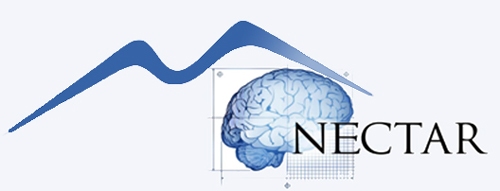The poster's maximum size is 80 x 120 cm (width x height).
Correct format... 
 Wrong format...
Wrong format...
P.1 Natalia Abate (Naples, Italy)
Human cerebral organoids as a tool to study synaptic plasticity alteration in EPM1
P.2 Giuseppina Amodio (Baronissi (SA), Italy)
The phosphoinositide phosphatase Synaptojanin-1 controls COPII vesicles assembly and trafficking in the early secretory pathway: implications for neurodegenerative diseases
P.3 Emily Atkinson (London, United Kingdom)
Design and synthesis of glial cell line-derived neurotrophic factor (GDNF) peptide mimetics for the treatment of Parkinson's Disease
P.4 Michela Ilaria Barbato (Edinburgh, United Kingdom)
Establishing a Progenitor Cell Bank of iPSC-derived cells poised for neural differentiation for the research community
P.5 Rebekah Bevans (Cork, Ireland)
Investigating the neuroprotective potenital of ZNHIT1 against alpha-synuclein-induced degeneration in in vitro models of relevance to Parkinson's Disease
P.6 Olga Teresa Bianciotto (Turin, Italy)
Analysis of the role of the synaptic adaptor protein p140Cap in iPSCs-derived human excitatory neurons
P.7 Helle Bogetofte Barnkob (Odense, Denmark)
Multi-omic analysis of guided and unguided forebrain organoids reveal differences in cellular composition and metabolic profiles
P.8 Jana Bonsberger (Lund, Sweden)
Patient-derived dopamine neurons for autologous cell replacement therapy for Parkinson's disease
P.9 Andreas Bruzelius (Lund, Sweden)
A three-dimensional co-culture model to generate human subtype specific interneurons
P.10 Massimiliano Caiazzo (Naples, Italy)
Cell engineering approaches for in vitro neural modeling
P.11 Andrew Chai (Edinburgh, United Kingdom)
Investigating the role of alpha-synuclein in neuronal innate immunity and its role in the interferon response pathway
P.12 Laura Colombo (Paris, France)
A human derived organ-on-chip model to study the role of LRRK2 in intestinal inflammation
P.13 Giulia Comini (Galway, Ireland)
The beneficial effect of a GDNF and BDNF-enriched collagen hydrogel on the differentiation of iPSC-derived dopaminergic progenitors in cyclosporine immunosuppressed rats
P.14 Sara Corsi (Lund, Sweden)
Exploring α-synuclein pathology development and microglia response in stem cell-derived transplants in a humanized xenograft model of PD
P.15 Laura De Rosa (Naples, Italy)
Early dysregulation of endosomal pathway in Down syndrome: potential impact in neuropathogenesis
P.16 Giuseppina Divisato (Naples, Italy)
Sorbitol dehydrogenase deficiency impairs mitochondrial homeostasis in patients affected by CMT2/dHMN
P.17 Tyra Fraser (Parkville, Australia)
Using engineered iPSC-reporter lines to characterise anatomical integration of transplanted human dopamine neurons
P.18 María García Garrote (Lund, Sweden)
Unravelling the role of vascular leptomeningeal cells (VLMCs) in hPSC-derived grafts for Parkinson’s Disease
P.19 Carmela Giachino (Paris, France)
The role of LRRK2 in intercellular communication
P.20 Gabriela Gomez Gonzalez (Orbassano (TO), Italy)
Exploring striatal graft functions through in vivo calcium recordings in a rat model of Huntington's Disease
P.21 Cinta Gomis López (Barcelona, Spain)
CD200-based cell sorting generates homogeneous subpopulations of transplantable striatal neuroblasts
P.22 Holly Gregory (London, United Kingdom)
Local immunosuppression using tacrolimus microparticles for cell transplantation in treatment of Parkinson’s disease
P.23 Francesco Gubinelli (Munich, Germany)
Investigating the role of DJ-1 mutation in iron dysregulation and neuronal damage in Parkinson’s disease
P.24 Mette Habekost (Lund, Sweden)
Direct reprogramming of human stem cell-derived glia into dopaminergic neurons for Parkinson's Disease therapy
P.25 Leonie Heger (Munich, Germany)
The role of synaptic mitochondrial dysfunction in dopamine oxidation in Parkinson’s disease
P.26 Srisaiyini Kidnapillai (Lund, Sweden)
Integration and maturation of transplanted human GABAergic interneurons derived from human glial progenitor cells into the mouse medial prefrontal cortex
P.27 Mariah Lelos (Cardiff, United Kingdom)
Generating a hESC-derived medium spiny neuron cell therapy product for clinical application
P.28 Ivan Lombardi (Milan, Italy)
Evaluation of hNSCs safety and efficacy upon intracerebroventricular transplantation in a preclinical model of ALS
P.29 Theresa Mader (Sundbyberg, Sweden)
Improved neural cell functionality by imitating the natural cell-matrix interactions in cellular models and translational research
P.30 Raquel Martínez Curiel (Lund, Sweden)
Human cortical neurons rapidly generated by direct ES cell programming integrate into stroke-injured rat cortex
P.31 Bengt Mattsson (Lund, Sweden)
A stereotaxic atlas of the nude rat brain allowing more precise targeting of human-to-rat xenografts
P.32 Kaushik Narasimhan (Galway, Ireland)
Assessing biomaterial microcarriers for sustained delivery of GDNF & BDNF in the context of enhancing cell-based brain repair in the Parkinsonian rat brain
P.33 Nikolina Ntinou (Patras, Greece)
Dissecting the impact of chronic stress on dentate gyrus plasticity in Tau brain pathology
P.34 Adam O'Mahony (Cork, Ireland)
The small molecule histone deacetylase inhibitor TMP269 is neuroprotective in 6-hydroxydopamine models of Parkinson’s Disease through a BMP Smad dependent pathway
P.35 [WITHDRAWN]
P.36 Francesca Palese (Paris, France)
Perturbation of membrane lipid composition and protein spreading between neurons
P.37 Sara Palma Tortoss (Lund, Sweden)
Development and validation of novel cell-based therapeutic strategies for human brain regeneration
P.38 Florentia Papastefanaki (Athens, Greece)
Cell-intrinsic pathological characteristics in p.A53T-αSyn iPSC-derived astrocytes from Parkinson’s disease patients
P.39 Tommy Patton (Galway, Ireland)
Sequential exposure to AAV-α-synuclein and FN075 as an approach to modelling Parkinson’s disease in the rat
P.40 Nicolas Prudon (Pessac, France)
Microtissue cell therapy for Parkinson’s disease: scale-up in bioreactors and latest in vivo results
P.41 Marta Ribodino (Orbassano (TO), Italy)
Functional circuit reconstruction of transplanted striatal neurons into a rodent model of Huntington's Disease
P.42 Jose Salazar Campos (Munich, Germany)
Unraveling the contribution of oligodendrocytes to Parkinson's disease pathology
P.43 Alrik Schörling (Copenhagen, Denmark)
APCDD1 outperforms other dopaminergic cell surface markers in benchmarking study
P.44 Christina Stamouli (Lund, Sweden)
Investigating a gene regulatory network and developmental trajectory for promoting parvalbumin neuronal fate during reprogramming
P.45 Petter Storm (Lund, Sweden)
Molecular lineage tracing of stem cell derived dopamine grafts in vivo reveals a shared origin of all graft-derived cells
P.46 Valeria Valente (Paris, France)
TDP-43 protein delocalization and spreading: new molecular insights in Amyotrophic lateral sclerosis pathogenesis and progression
P.47 Zhijun Wang (Edinburgh, United Kingdom)
Visualizing mitochondrial dysfunction in human neurons and cardiomyocytes with mitochondrial stress reporter iPSC lines
P.48 Rachel Wise (Munich, Germany)
Iron dyshomeostasis and dopamine oxidation in iPSC-derived dopaminergic neurons from Beta-propeller Protein-Associated Neurodegeneration (BPAN) patients




 Wrong format...
Wrong format...